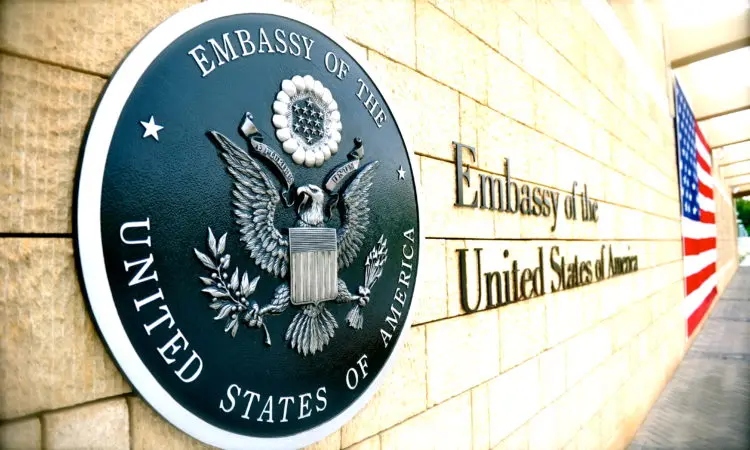The U.S. Embassy is the official headquarters for U.S. diplomats and other government representatives stationed abroad.
Ambassadors typically serve as the President of the United States representative in the host nation. A country’s embassy is typically located in its capital city but may also have consulates in other cities.
The Functions of the U.S. Embassy
The primary function of an embassy is to assist American citizens who are visiting or residing in the host nation. Foreign Service Officers of the United States are also responsible for advancing U.S. interests abroad. Representatives of the host government, nongovernmental organisations, the media, local businesses, educational institutions and private citizens interact with embassy personnel.
These interactions increase mutual understanding of the United States and its policies. Additionally, embassy personnel assess the political and economic climate of the host nation. Their findings may aid U.S. companies in locating partners and clients.
If requested by the host nation, U.S. embassy personnel can provide training to the host nation’s police and military to better support the country’s security efforts.
Additionally, the U.S. embassy supports educational, professional, and cultural exchanges. These knowledge exchanges introduce emerging and established leaders to the United States. Long-term exchanges strengthen ties between American and international students, academics, scientists, businesspeople, and political, religious and civil society figures.
U.S. Foreign Service Officers interview host nation citizens who wish to visit the United States for business, education, or tourism.
Numerous Americans work in embassies and consulates to handle all sensitive foreign policy and national security responsibilities. However, the majority of embassy personnel are from the host nation. These workers are referred to as locally employed staff. These employees are crucial to any embassy’s success. Locally employed staff is familiar with the local culture and language, possesses essential skills pertinent to the region, and has strong connections with foreign government and civil society leaders.
The U.S. Embassy Building(s)
A large embassy may contain multiple buildings. The main embassy structure is known as the chancery, while additional structures are known as annexes. As the focal point of the United States in foreign countries, embassies are frequently architectural masterpieces. Due to safety concerns, American diplomats may reside in certain nations’ embassy grounds.
The status of U.S. embassies and consulates abroad and foreign embassies and consulates in the United States is unique. The host government is responsible for the safety and security of the U.S. diplomats and the embassy’s surrounding area, but the embassy belongs to the nation it represents. Without permission, representatives of the host nation may not enter an embassy. An assault on an embassy is viewed as an assault on the nation it represents.
Head of a U.S. Embassy
The ambassador is also referred to as the mission chief. They are the highest-ranking diplomat in the host nation and the President’s representative. They are comparable to a corporation’s chief executive officer and must be effective leaders and managers. The residence of the ambassador is frequently used for official functions. Its public spaces may feature artwork on loan from American museums.
The Deputy Chief of Mission(also known as the Deputy) and a team of U.S. Foreign Service Officers and Department of State specialists assist ambassadors. Other U.S. government agencies also support the ambassador. The USAID, which is the U.S. Agency for International Development and the Departments of Defense, Commerce, Justice, Homeland Security, and Agriculture departments can also be found at U.S. embassies. Regardless of their agency, all employees report directly to the ambassador.
Did this advice help?
Is there anything wrong with this page?
If so let us know!
